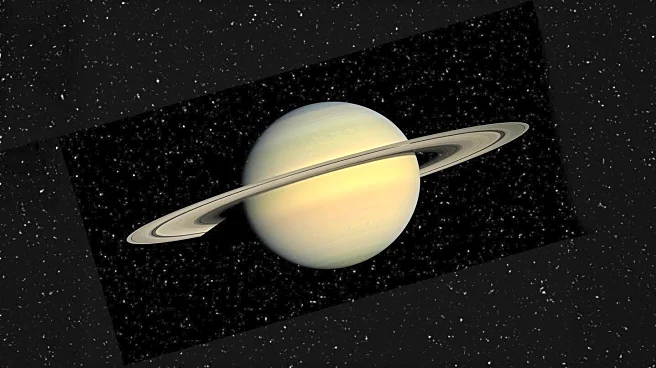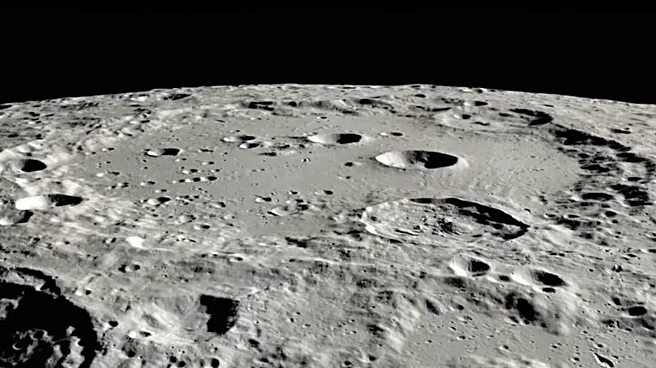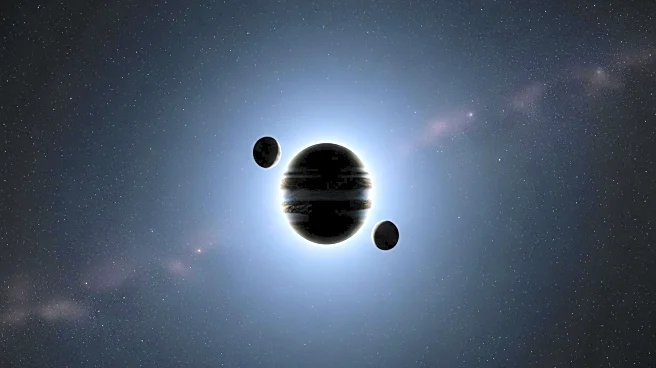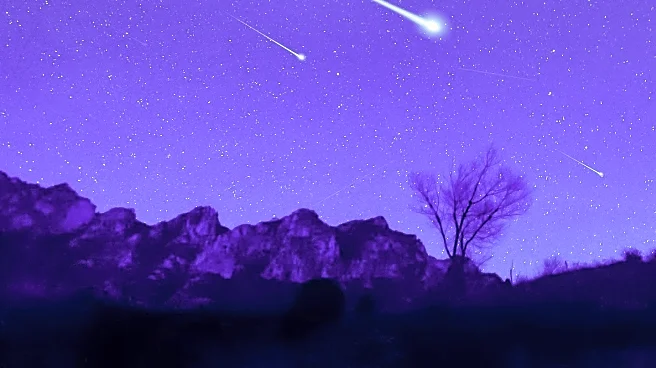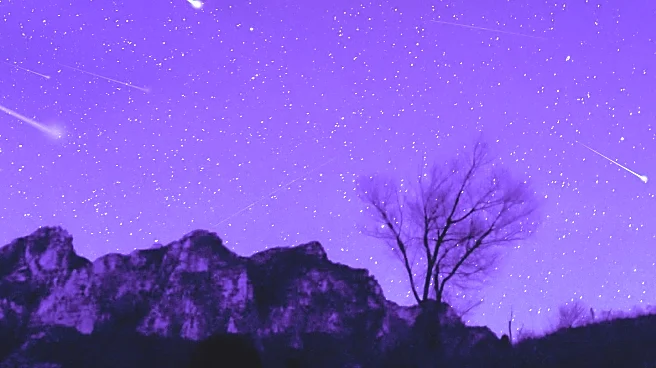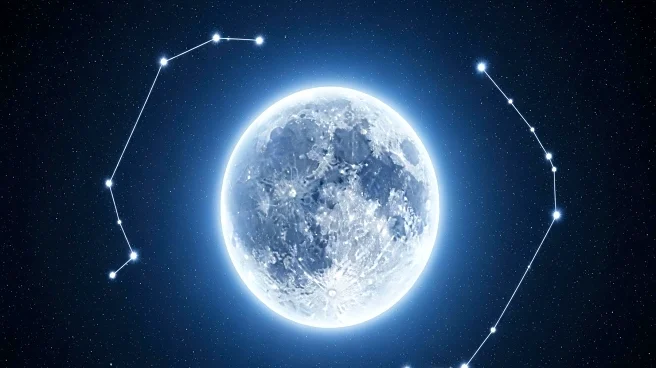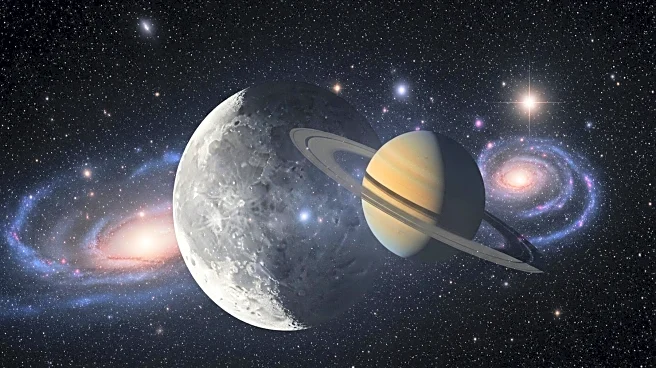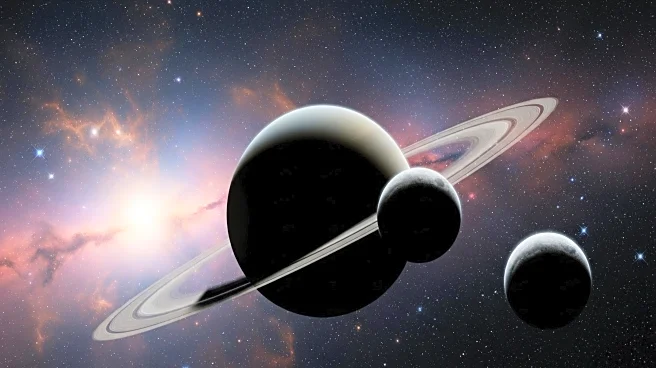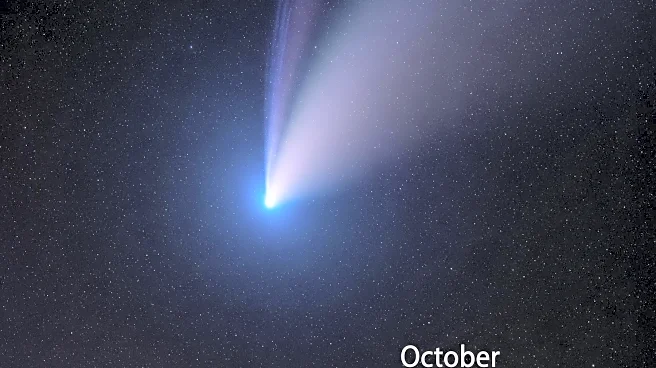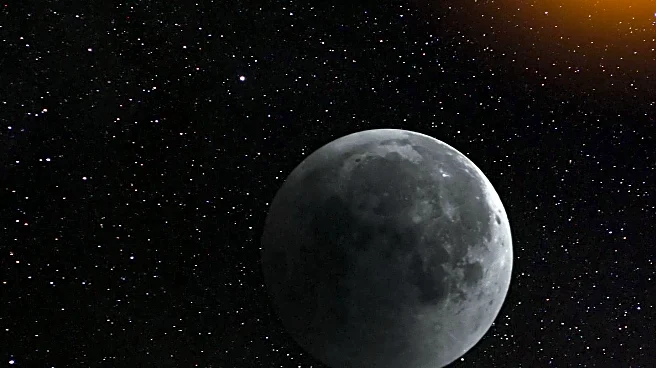What's Happening?
On October 5, 2025, Saturn and the nearly full moon will align in the night sky, offering a rare opportunity to view Saturn's rings and lunar features. This celestial event occurs around 8 p.m. local time, with Saturn appearing just below the moon. The moon will be 98.5% illuminated, showcasing prominent features like the Tycho and Copernicus craters. Saturn's rings, although appearing as a thin line due to their current tilt, will be visible through telescopes, providing a stunning sight for astronomy enthusiasts.
Why It's Important?
The alignment of Saturn and the moon offers a unique opportunity for public engagement with astronomy, allowing both amateur and professional astronomers to observe and appreciate the beauty of the night sky. This event highlights the importance of celestial phenomena in fostering interest in science and space exploration. The visibility of Saturn's rings, despite their current narrow appearance, underscores the dynamic nature of planetary observation and the ongoing interest in understanding our solar system.
What's Next?
As Saturn's rings continue to evolve in appearance, future observations will offer different perspectives and insights into the planet's characteristics. The ongoing interest in celestial events like this alignment encourages continued investment in astronomy and space exploration. Public engagement through events and educational initiatives will remain crucial in promoting scientific literacy and appreciation for the universe.
Beyond the Headlines
The apparent proximity of Saturn and the moon serves as a reminder of the vast distances and scales involved in space, offering a humbling perspective on our place in the universe. The event also highlights the role of technology and scientific collaboration in making such observations accessible to the public. The ongoing interest in celestial events reflects a broader cultural and scientific appreciation for space exploration and the mysteries of the universe.

